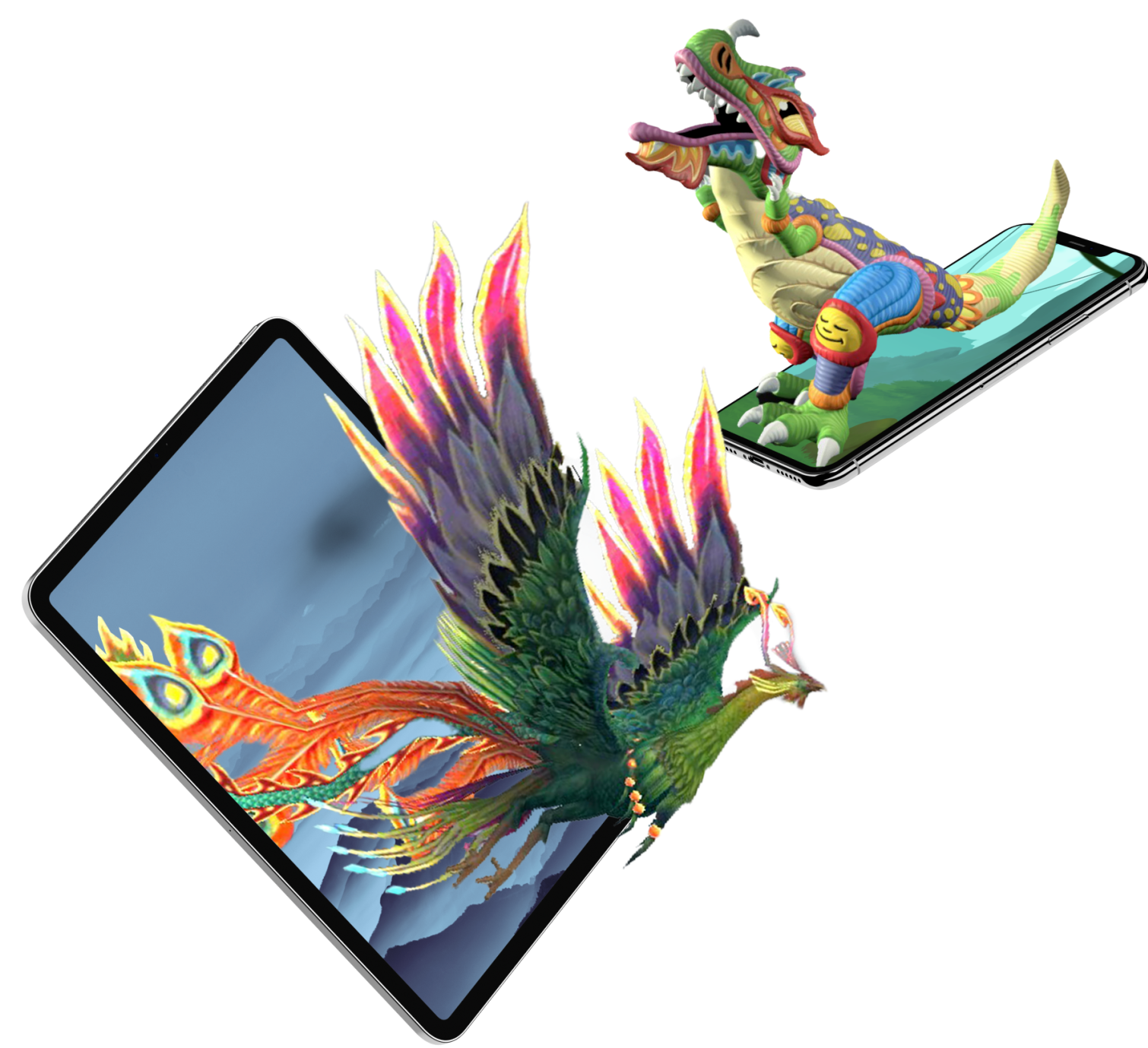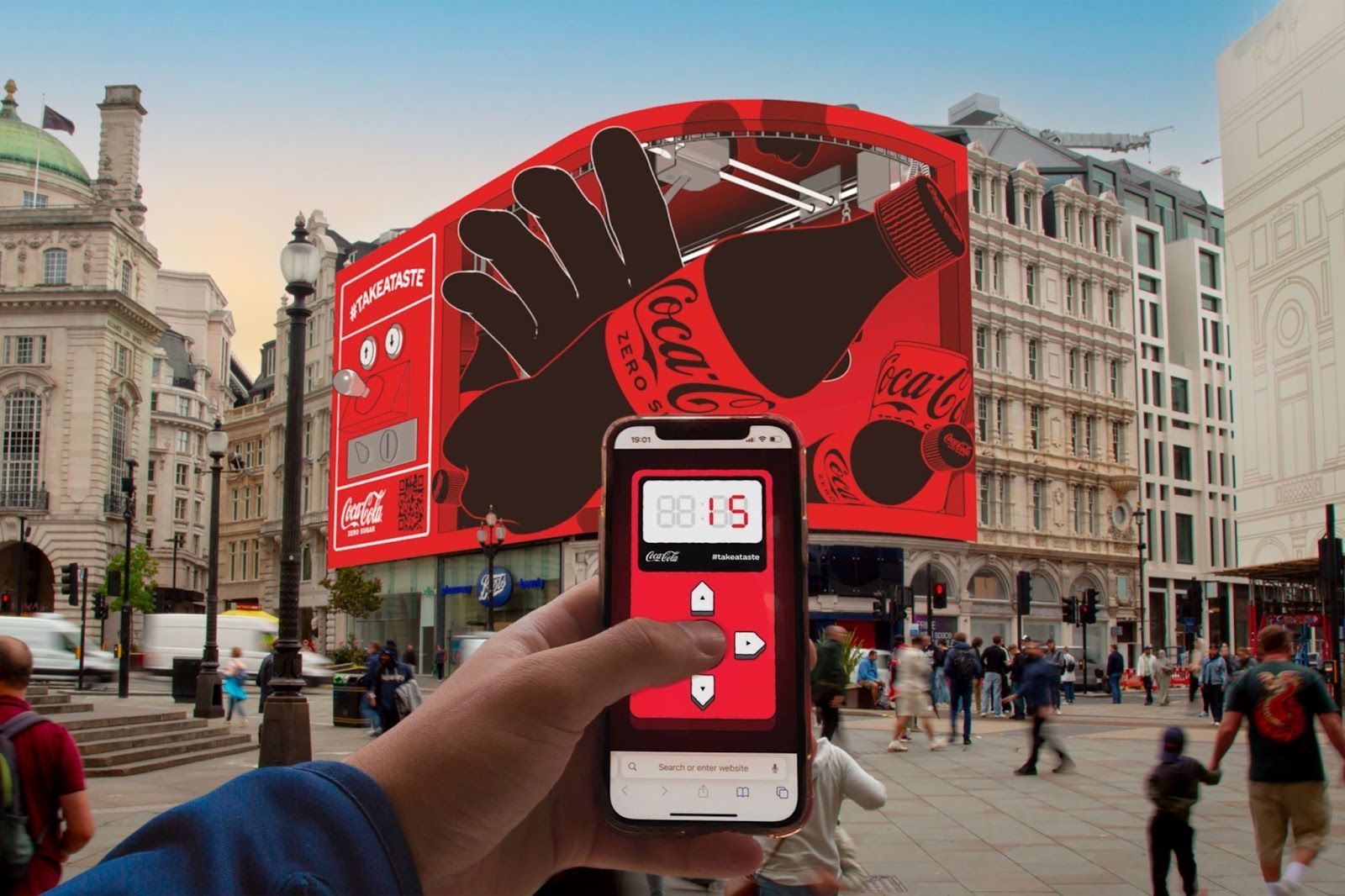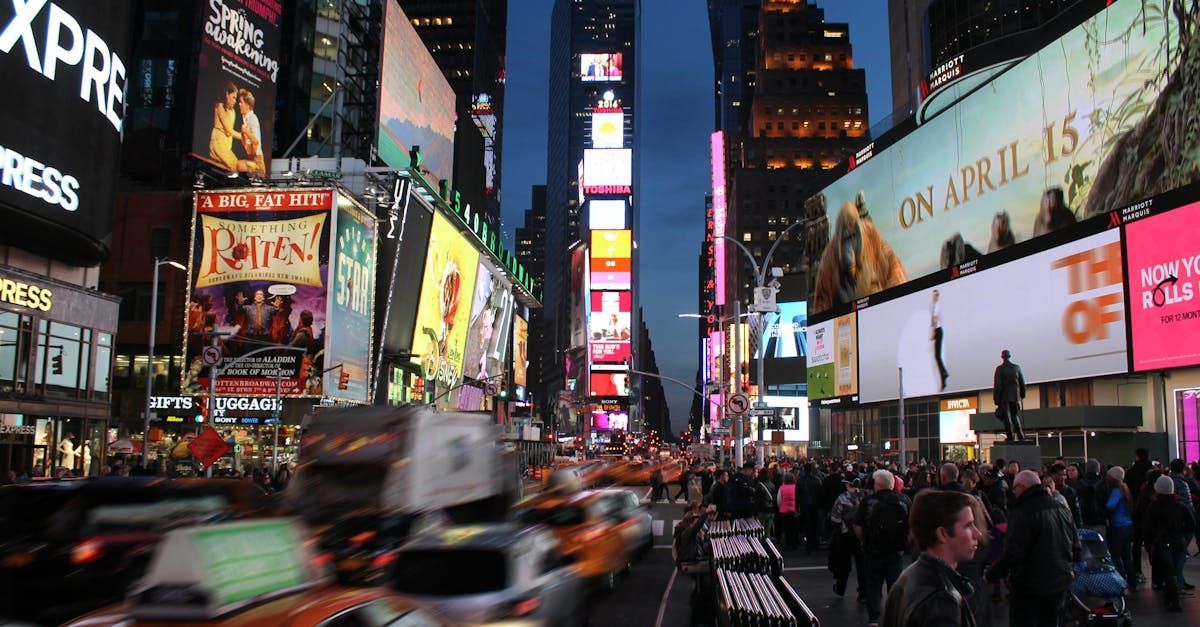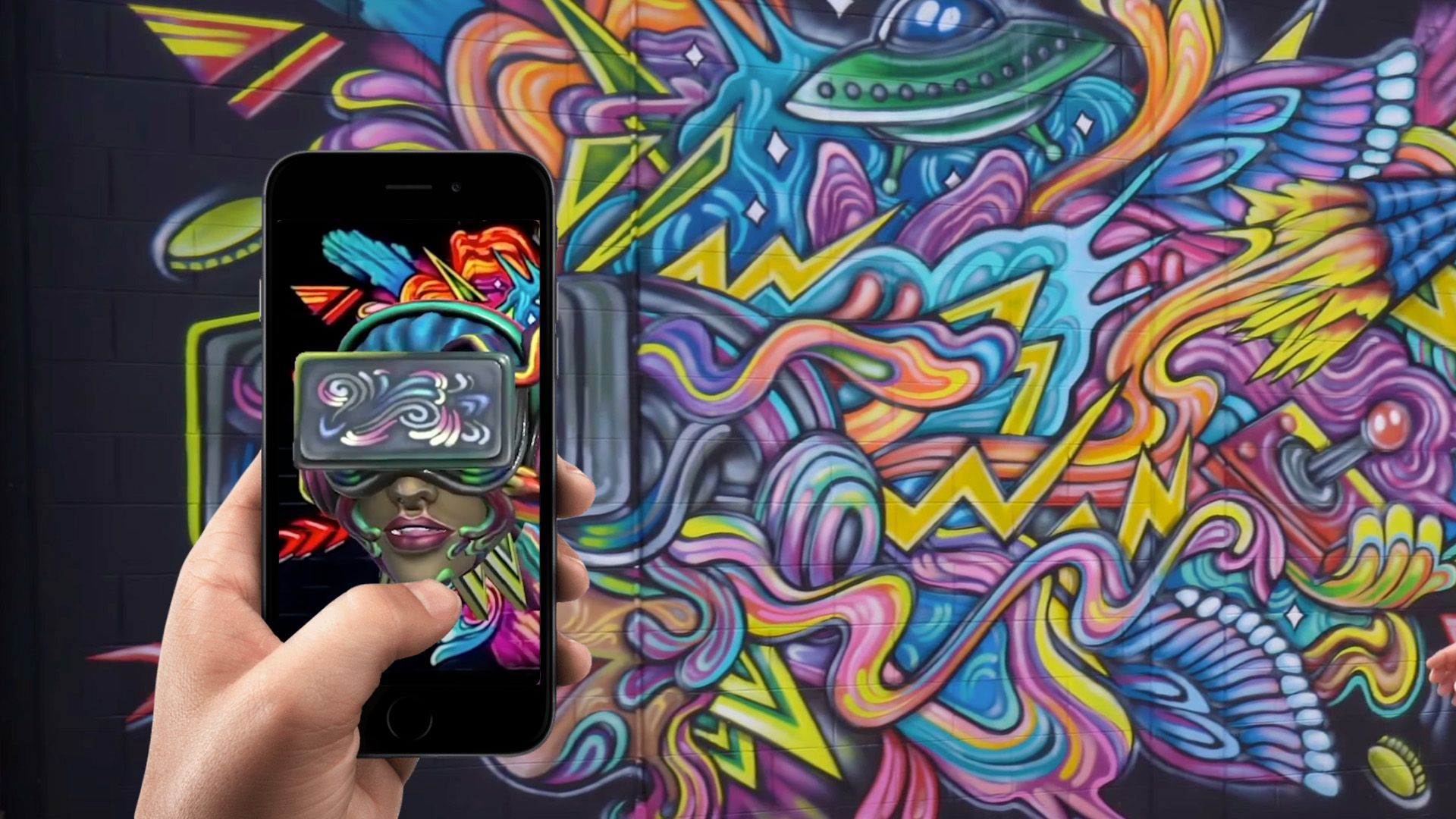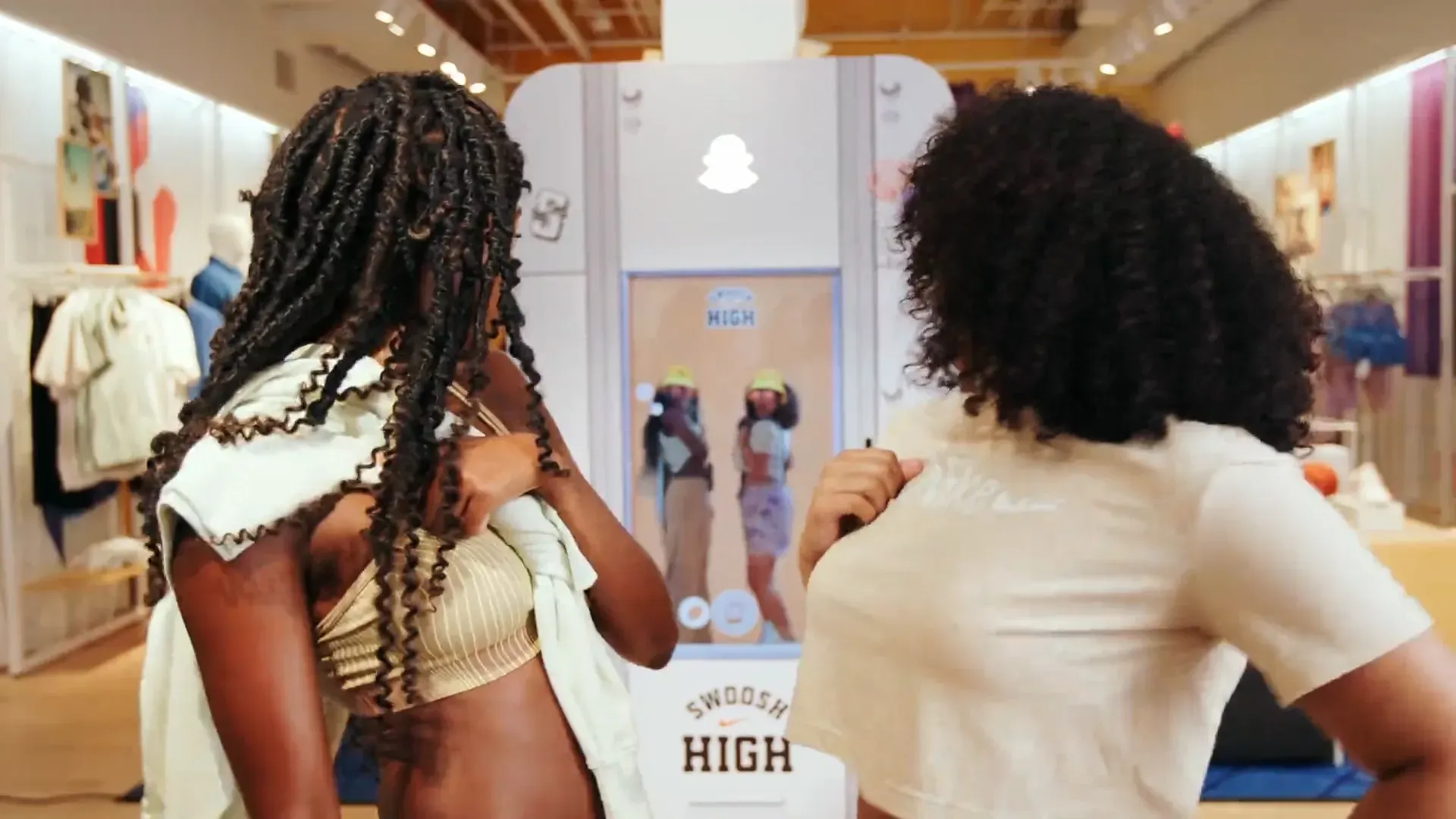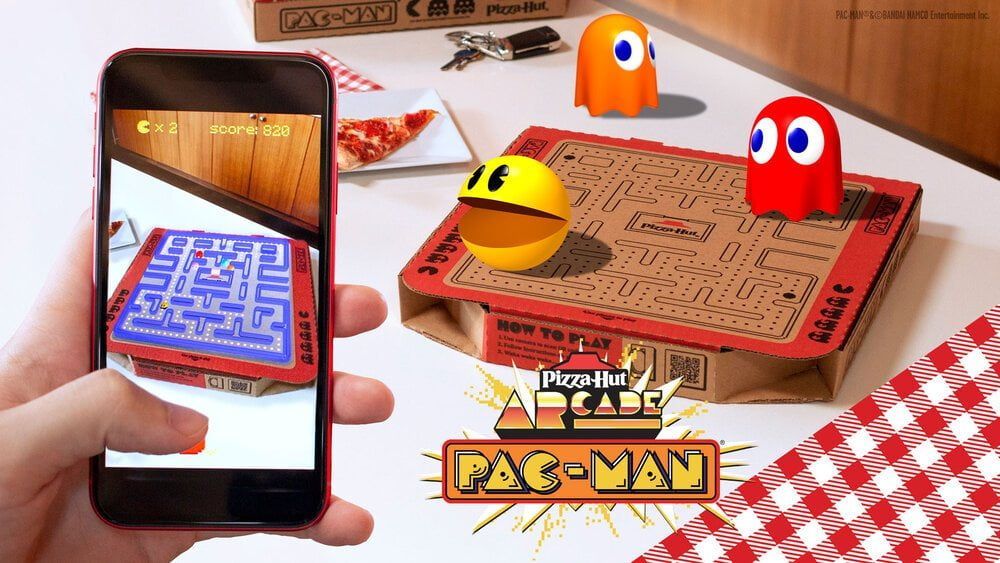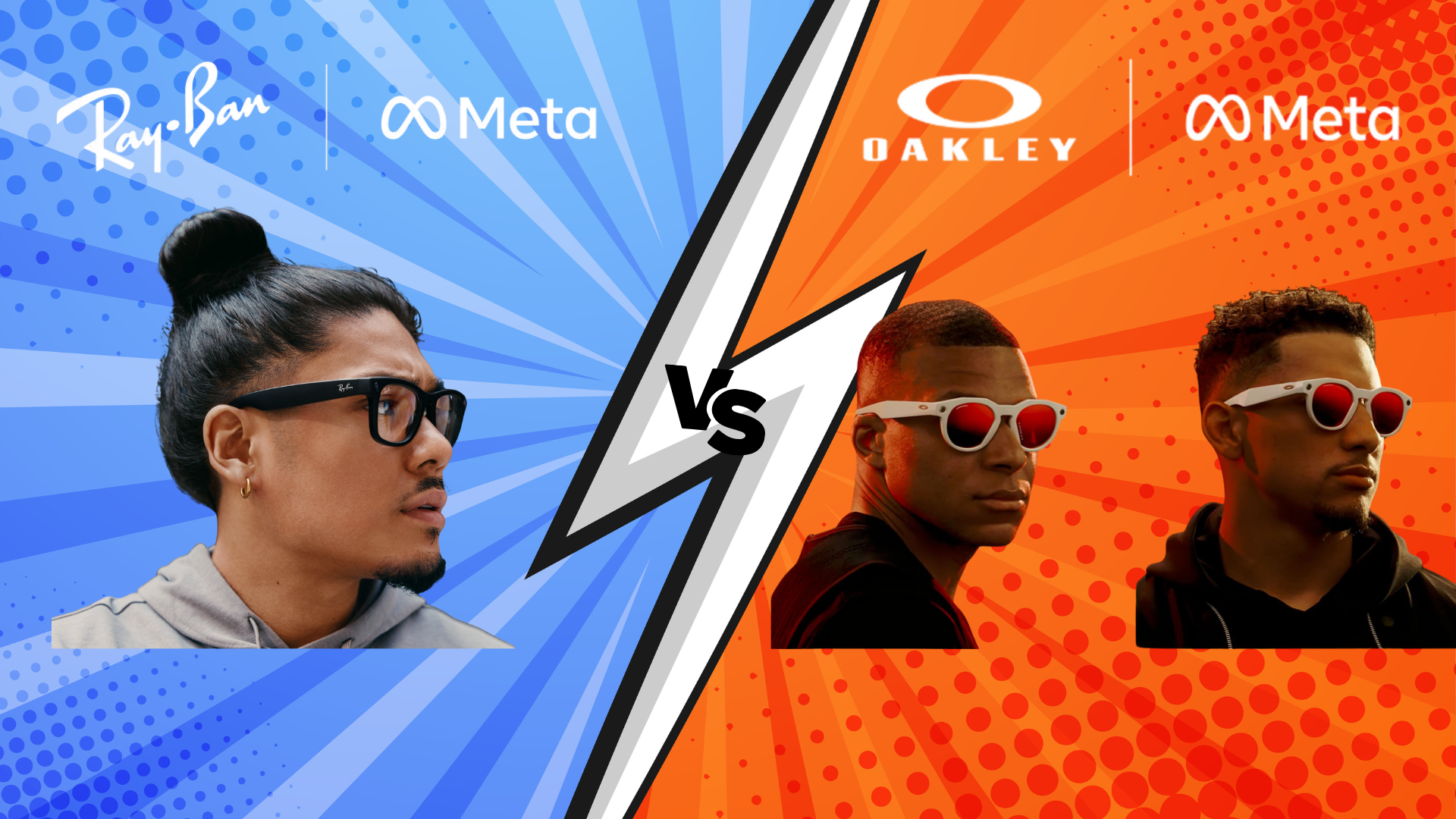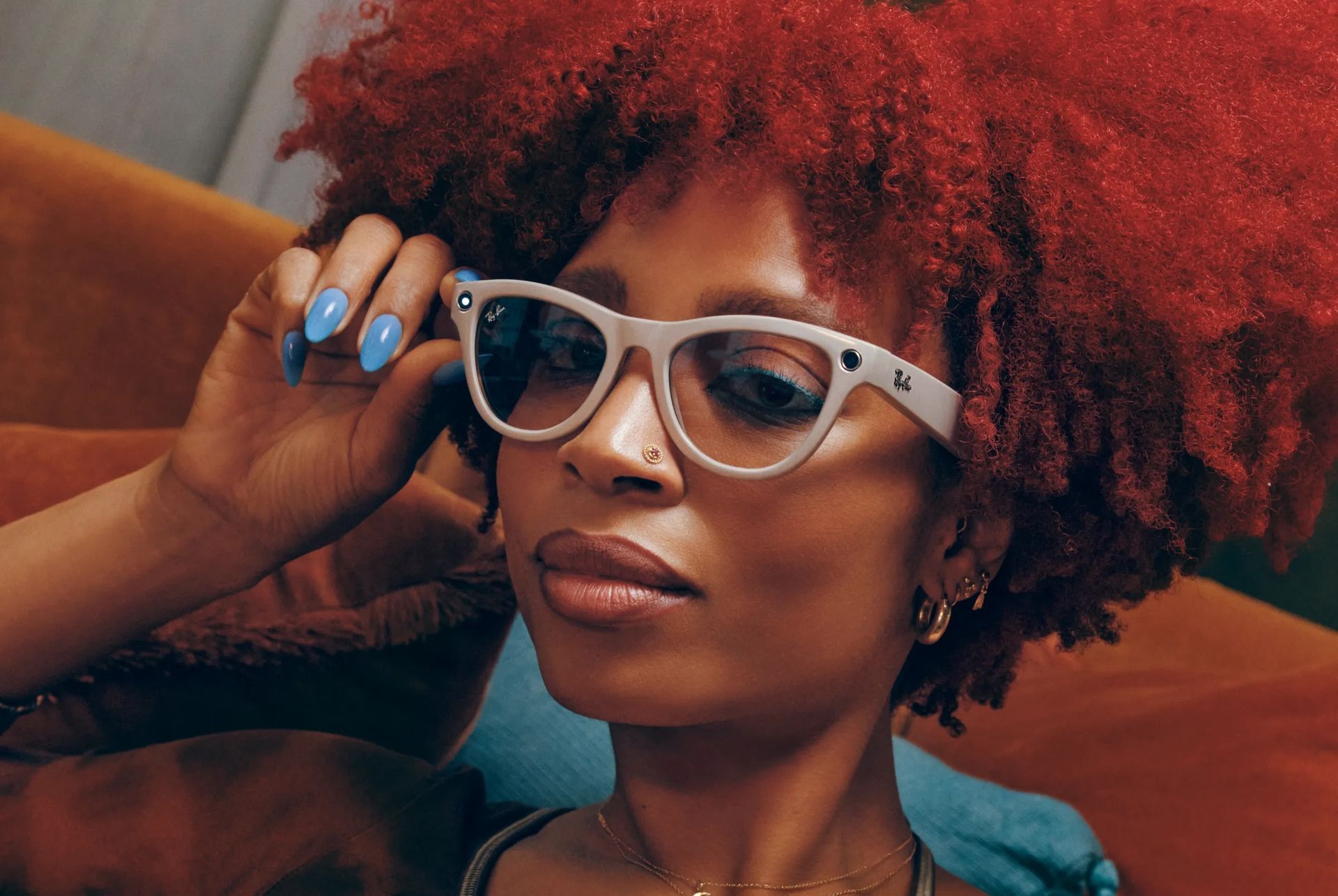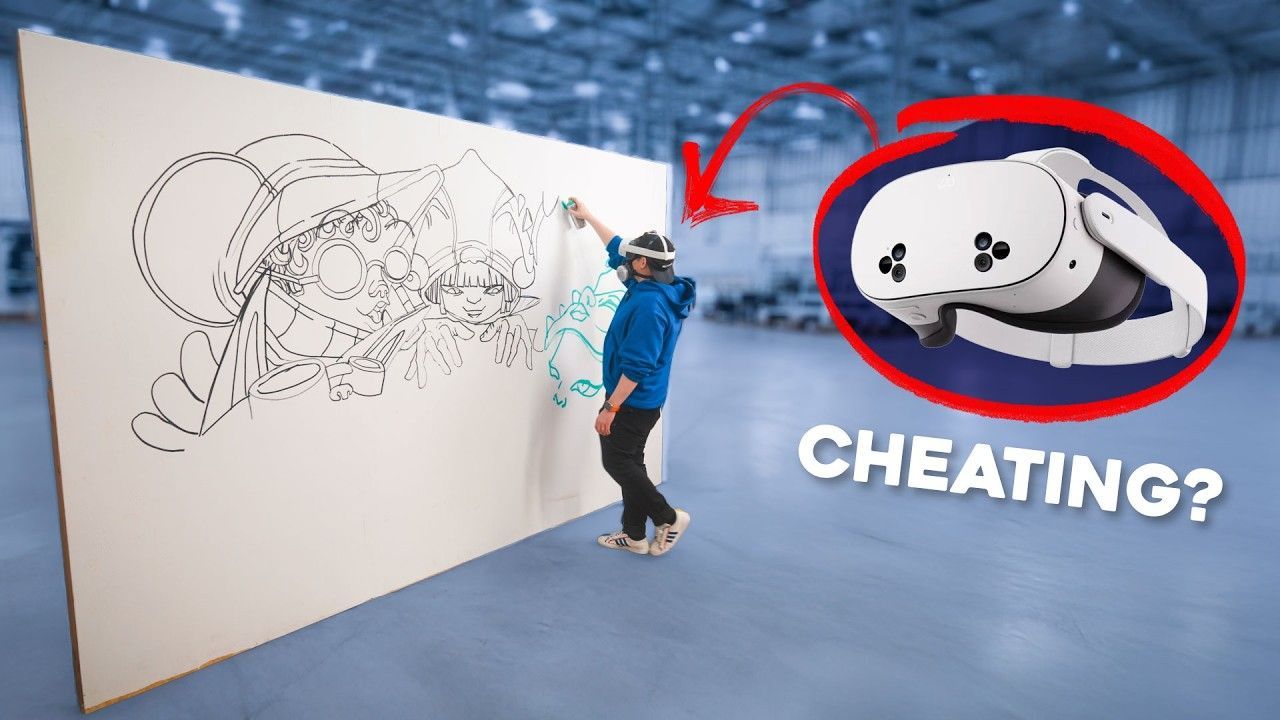BrandXR Research Report: 2025 Metaverse Marketing Strategies for Fortune 500 Brands
The “metaverse” has emerged as a new arena for brand innovation and customer engagement, blending virtual and physical experiences. While a fully realized metaverse is still evolving, leading companies are already experimenting with immersive marketing strategies to gain an early edge. McKinsey estimates the metaverse could generate up to $5 trillion in economic value by 2030, and many Fortune 500 brands are investing now to build their presence and connect with the next generation of consumers. From augmented reality (AR) activations in the real world to persistent virtual venues on gaming platforms, Fortune 500 companies are leveraging a spectrum of metaverse marketing strategies. Below, we explore key strategies – including NFTs, AR filters, immersive out-of-home ads, AR-enhanced events, and branded virtual worlds – and how they are being used to engage audiences in new ways.
NFTs and Digital Collectibles
One entry point for brands into the metaverse has been through non-fungible tokens (NFTs) and digital collectibles. NFTs are unique digital assets on the blockchain that allow brands to offer limited-edition virtual goods, artworks, or experiences to fans. Major companies have launched NFT collections as a marketing strategy – for example, Coca-Cola’s first NFT auction in 2021 garnered over $575,000 in bids, with proceeds going to charity. The NFTs (packaged as a “loot box” of digital Coca-Cola memorabilia) tapped into the brand’s heritage while engaging crypto communities, illustrating how digital collectibles can generate buzz and fan involvement in the metaverse.
However, NFTs do not have to consist solely of static images or virtual items. Brands are currently exploring ways to enhance NFTs with interactive and augmented reality elements. Augmented reality NFTs merge NFT ownership with immersive experiences: by using AR filters and apps, users can project their NFT content into the real world or share it on social media. This adds both utility and entertainment value to the digital collectible. For instance, AR can “bring NFTs to life” through interactive 3D filters that users share on Instagram, Snapchat, or TikTok. By incorporating AR with NFTs, brands can enable gamification (e.g., unlocking hidden features when scanning an NFT in AR) and create more socially engaging experiences that transcend static images. Essentially, AR provides brands a way to elevate their NFT offerings into memorable, shareable moments. An NFT of a branded character, for example, can come with an AR lens that places that 3D character in a fan’s room or allows the fan to “wear” the character as an avatar filter – merging the digital collectible with real-world interaction. This strategy not only increases the utility of NFTs for the holder but also amplifies organic marketing as fans create user-generated content using the AR features.
By leveraging NFTs (and perhaps pairing them with AR), Fortune 500 brands can create
digital
collectibles that serve as marketing assets, driving demand based on scarcity, fostering community, and encouraging viral sharing. As consumers devote more time to digital spaces, status symbols and brand memorabilia are increasingly moving virtual. From fashion companies launching NFT apparel to sports franchises offering highlight clips as NFTs, this strategy enables brands to monetize digital fandom and maintain their presence in metaverse culture. The key is to ensure these offerings provide genuine engagement or value.
Augmented reality serves as one tool to achieve that, transforming a simple NFT into a gateway for an
interactive brand experience.
Social AR Filters and Lenses
Another highly popular metaverse marketing tactic for large brands is using social media AR filters and lenses on platforms like Snapchat, Instagram, Facebook, and TikTok. These AR effects enable users to overlay digital graphics onto the real world through their smartphone cameras—for example, trying on virtual makeup, transforming one’s face into a branded character, or interacting with objects in AR. Social AR filters combine entertainment with promotion, encouraging users to share photos and videos that serve as brand content. They have rapidly become one of the most effective tools in digital marketing for audience engagement and capture on social platforms.
The reach of AR filters is enormous. Snapchat alone reports that over 250 million of its users engage with augmented reality every day. This figure represents roughly two-thirds of Snapchat’s daily active user base interacting with AR features daily. Instagram and TikTok have also integrated AR effects (via Spark AR and Effect House) to enhance content creation. This widespread usage means that a well-crafted branded AR lens can potentially go viral and reach tens of millions of consumers in a short period. Indeed, AR filters can significantly boost a brand’s visibility and memorability, as consumer appetite for interactive, “fun” content continues to grow.
Leading brands routinely incorporate AR lenses into their campaign strategies. One article noted that in 2022, marketing teams should continuously brainstorm Snapchat filter ideas as “another arrow in the marketing quiver” alongside traditional ads and influencer content. The creative possibilities are diverse—from simple face filters that add branded effects to world lenses that place 3D products in a user’s environment to AR mini-games. Many companies partner with specialized AR developers (such as BrandXR or Snap’s Lens Studio creators) to produce high-quality filters if they lack in-house AR talent. The investment can pay off: for instance, Taco Bell’s Snapchat lens for Cinco de Mayo transformed users’ heads into a giant taco—a playful concept that garnered 224 million views in just one day, setting a Snapchat record. That campaign generated 12.5 years’ worth of plays in 24 hours (in terms of aggregate time users spent with it) and demonstrated the viral potential of a clever AR filter. This massive engagement far surpasses what most traditional social posts or banner ads can achieve, highlighting how AR can amplify a brand message through user participation.
Augmented reality filters also drive large-scale user-generated content. When consumers overlay a brand’s AR effect on their selfies or surroundings and share the results, they effectively become brand ambassadors promoting the brand to their friends. This peer sharing carries a credibility that stems from word-of-mouth. A striking example comes from the NBA’s 75th Anniversary Instagram filters in 2022. The NBA partnered with BrandXR, an immersive tech firm, to create two nostalgic AR filters for Instagram stories (one was an “NBA trivia gibberish” game, and the other a digital diamond basketball). In just three weeks, these two filters amassed over 50 million impressions and more than 18,000 user-created videos shared by fans. This remarkable engagement was achieved organically, as enthusiastic fans experimented with the filters and posted their outcomes. The campaign illustrates how AR lenses can spark participatory marketing on a grand scale, especially when tied to pop culture moments or fan communities (in this case, NBA fans celebrating a milestone season).
For Fortune 500 brands,
social AR marketing provides a seamless way to engage in the metaverse conversation. The audience is already on mobile apps, and trying a filter takes just one tap. AR lenses combine the playful interaction of the metaverse with the network effects of social media. Consequently, we’ve seen everything from fast-food chains to luxury fashion houses adopting AR filters: whether to allow users to “wear” a new sneaker virtually, place themselves in a movie scene, or simply add branded art to their selfies. These experiences connect with young consumers in their native digital language and transform marketing into something participatory. In a sense,
AR filters act as the
metaverse’s
word-of-mouth, enjoyable effects that people share for social currency while also conveying branded messaging. With hundreds of millions of daily AR users available, incorporating AR lenses into campaigns has quickly evolved from a novelty to an essential strategy for brands seeking to remain culturally relevant.
Augmented Reality Murals: Interactive Public Art
While social media AR occurs on personal screens, brands are also introducing AR into public spaces through augmented reality murals. An AR mural is essentially a traditional mural or wall art enhanced with digital content when viewed through a smartphone or tablet. It combines one of the oldest art forms—mural painting—with cutting-edge AR technology. When a passerby scans a QR code near the mural and points their phone at the wall, they see the static artwork come to life through 3D animations, videos, and interactive elements integrated into the physical mural. In other words, the wall transforms into a trigger for an immersive story or game in augmented reality.
Augmented reality murals enable Fortune 500 brands to transform ordinary city walls into engaging experiential marketing platforms. These installations enhance public spaces and create destinations where people can memorably engage with the brand. For example, a beverage company could commission a vibrant street mural that, through AR, displays its product bursting out of the wall with special effects. Alternatively, an entertainment brand could create a mural that, when scanned, allows users to enter a mini AR game related to a movie or show. Viewers step inside the artwork via their screens, blurring the line between advertisement and entertainment. This deepens engagement: people spend more time interacting with the brand content and often capture photos or videos of the experience to share on social media.
Crucially, AR murals invite user participation and content creation. As BrandXR notes, a great AR mural becomes a “content creation machine,” prompting fans to record viral videos and take photos with the activated mural. In doing so, the audience becomes a co-creator of the brand story. This is a powerful form of organic promotion, as each visitor’s shared post extends the campaign’s reach. Moreover, AR murals can provide brands with valuable data; the AR app can track scans, engagement time, and even prompt users to sign up or answer surveys, offering insights on the most captivated fans.
Several prominent companies have begun experimenting with AR murals as part of their marketing strategies. Honda, for instance, launched an interactive AR mural campaign in 2023 to promote its electric vehicles. The “Wall of Dreams” mural in Los Angeles, activated via mobile AR, displayed 3D Honda products (like an eVTOL aircraft and the new Prologue EV) soaring out of the wall and interacting with the sky. This initiative coincided with the holiday shopping season, strategically situated at a busy outdoor mall to capture foot traffic. According to research cited by Honda, nearly 70% of consumers take some action after seeing a digital street-level ad – an impressive statistic that underscores why brands are eager to embrace interactive outdoor media. By using AR murals, Honda and others strive to convert passing eyes into engaged customers who not only view the ad but also stop, interact, and share it. Other brands like Tripadvisor, Shake Shack, and Lego have also utilized AR to enliven their outdoor ads, indicating a broader trend of augmenting billboards, posters, and murals with digital experiences.
In summary,
AR murals represent a convergence of art, advertising, and technology. They exemplify “phygital” marketing – merging physical locations with digital content. For Fortune 500 companies, an AR mural can serve as a marquee
brand experience that garners local buzz (by enhancing a community space) and global exposure (through social sharing). It’s a strategy that not only captures attention in the moment but also yields a stream of user-generated promotion. By activating public spaces with AR, brands effectively
extend the metaverse into the real world, inviting consumers to play an active role in the storytelling.
AR Billboards and Immersive OOH Advertising
In addition to murals, brands are transforming traditional advertising formats like billboards and posters by using augmented reality. AR billboards turn static signage into interactive 3D experiences when viewed through a smartphone. The concept is similar: the billboard includes a QR code or instructions to launch an AR experience; users scan it and then point their camera at the billboard, and suddenly the advertisement “breaks the fourth wall.” As described by BrandXR, an augmented reality billboard uses computer vision so that “3D models and animations pop out of [the] billboard, and people can play with them like video games.” In practice, that might mean a car on a billboard comes to life and drives off the sign, or a movie character steps out of the poster and into the viewer’s immediate surroundings via AR. This creates a moment of surprise and delight, turning a glance at an ad into an immersive encounter.
For marketers, AR-enabled out-of-home (OOH) ads provide a way to engage a jaded audience that might otherwise ignore traditional billboards. They effectively capture audiences to create personalized branded content – viewers can take selfies or videos featuring the AR billboard content and share their experiences on social media. Similar to AR murals, this can turn a billboard into a viral content generator. BrandXR notes that a good AR billboard can become a “powerful content creation machine,” yielding potentially millions of fan-shared photos and videos. This peer-to-peer amplification significantly extends the ad's reach beyond its physical location. It also makes the ad more memorable in consumers’ minds; instead of a passive impression, people have an active, engaging interaction with the brand.
Another benefit is the measurability and feedback that AR provides. Traditional billboards are notoriously hard to track regarding engagement and conversion. However, when a user interacts with an AR billboard through a mobile app or web AR, the brand can collect metrics (scans, dwell time, shares, etc.) and even encourage actions like visiting a website or unlocking a coupon. This bridges the gap between offline and online marketing. It also offers advertisers insight into how compelling their creative is – if an AR billboard is engaging enough to play with and share, it’s clearly resonating. The earlier statistic from OOH research – 70% of people taking an action after seeing a digital street ad – suggests that interactive billboards can drive consumers further down the funnel, whether that action is a social share, a web visit, or a purchase inquiry.
Fortune 500 brands in retail, automotive, entertainment, and other sectors are piloting AR in their OOH campaigns. We’ve mentioned Honda’s AR mural; similarly, AR billboard-style experiences have been utilized by companies like Burger King (which had an AR app that let users “burn” rival ads to reveal a coupon), Lego (which created AR bus stop ads that showcased life-sized Lego models in the street), and others. These campaigns are often high-profile and generate PR buzz due to their innovative use of technology. Importantly, AR billboards are format-agnostic: they can enhance digital billboards (adding interactive AR layers to large LED screens) or traditional print billboards (making even a paper poster interactive through AR). This means brands can retrofit existing ad placements with a digital dimension rather than purchase entirely new real estate. Whether it’s at a bus shelter, a highway sign, or a Times Square billboard, any ad can be transformed into a portal for a mini-metaverse experience.
The versatility and
immersive impact of AR in OOH advertising align well with the goals of Fortune 500 brands to cut through ad clutter. By inviting consumers to
engage with
advertisements, AR billboards create a two-way interaction that static ads cannot match. Viewers become participants, and their
emotional responses to the surprise and interactivity can foster a stronger connection to the brand message. As AR hardware (like glasses) improves in the coming years, we can expect this trend to accelerate – but even today, companies are transforming large signs into interactive brand experiences using just smartphones.
AR billboards exemplify how the metaverse ethos (interaction, immersion, individual agency) can be applied to traditional marketing channels, refreshing them for the modern, tech-savvy consumer.
Augmented Reality in Live Events and Experiential Marketing
Live events – such as trade shows, product launches, sporting events, concerts, and corporate conferences – are ripe for metaverse-inspired innovation. Event marketers are increasingly using augmented reality to enrich on-site experiences and wow attendees. AR can overlay digital information or interactive content onto the physical event space, creating a blended experience that is more engaging and memorable than the physical event alone. In an era where people have been inundated with virtual events and screen-based content, incorporating AR at in-person events provides a novel “wow factor” that can reignite attendee enthusiasm. It’s an opportunity for Fortune 500 brands to make a lasting impression on customers, partners, or employees who attend their events.
So, how are events using augmented reality? Here are a few examples of AR applications in the event industry:
- Product Demonstrations: AR allows companies to showcase large or complex products interactively without physically bringing them to the venue. For instance, an automotive brand at a trade show can use AR to let attendees virtually walk around and see a new car model’s features, even if the actual vehicle isn’t on the floor. This is cost-effective and logistically easier, while still giving a realistic sense of the product.
- Interactive Exhibits and AR Murals: AR can turn static booths or exhibits into dynamic experiences. A museum or corporate exhibit might bring a display to life with AR animations, or an event might include an
AR mural photo wall for attendees to explore. These interactions are naturally shareable on social media due to their novel, “viral” nature, extending the event’s reach beyond its physical attendees.
- Virtual Tours: At conferences or destination events, AR can offer virtual tours of places that attendees can’t physically go. For example, a tourism board at a travel expo could use AR to let visitors experience a famous landmark virtually. This immerses the audience in the story being told without needing a VR headset or leaving the venue.
- Training and Simulations: Some companies use AR and VR during internal events or training sessions. AR can create hands-on training simulations in a safe, controlled manner. For example, at a corporate retreat, employees might use AR to practice technical repair procedures on virtual equipment, or go through a gamified learning experience. This makes training more engaging and memorable.
- AR-enhanced Event Invites: AR can play a role even before the event. Brands have started sending AR invitations—for instance, a mailed invite or an email that includes a QR code to launch an AR experience teasing the event. An attendee might scan the invite to see a 3D preview of the event venue or unlock exclusive content that builds excitement. This sets a high-tech tone from the outset and can boost attendance through increased interest.
These examples showcase the versatility of AR at events, from pre-event marketing to on-site engagement. The common thread is interactivity: attendees are not just passively consuming content but actively participating in it. The result is often higher engagement metrics and satisfaction. In fact, interactive AR installations at events have demonstrated significantly better performance than traditional exhibits. In trade show settings, top-performing AR experiences (like “AR mirror” photo booths or AR games at booths) have achieved 65–80% participation rates among passing visitors (compared to about 30% engagement with a standard booth). Attendees also spend more time—on average 3.5 minutes—interacting when AR is involved, and a majority will share content from the experience (AR activations saw content sharing rates around 60%, vastly higher than typical event photo ops). These metrics, reported from industry benchmarks, emphasize AR’s ability to engage event audiences and enhance reach through social sharing.
Ultimately,
augmented reality is elevating event marketing by creating multi-sensory, immersive experiences that resonate with attendees. A well-crafted AR experience can transform a product demo into an adventure, or a sponsorship activation into a memorable topic that continues to circulate on social media. It also aligns with the expectations of today's attendees—especially younger ones—who seek interactive and personalized experiences. As one AR events article put it, AR has
“the potential to transform events
and
take attendee engagement to new heights.” Fortune 500 brands investing in AR for events are signaling that they are innovative and eager to
impress
and engage their audience on a deeper level. In an increasingly hybrid world, where the boundary between physical and digital engagement blurs, AR ensures that in-person events remain exciting, shareable, and relevant.
Branded Virtual Worlds and Immersive Experiences
Beyond AR-enhanced marketing in the physical world, many Fortune 500 companies are also establishing a presence in virtual environments often linked to the metaverse. This strategy involves creating branded experiences within popular platforms such as Roblox, Fortnite, Decentraland, and Minecraft, along with custom virtual reality spaces. The goal is to engage users in immersive, persistent virtual venues where they can interact with the brand in creative ways, socialize, and even transact in a purely digital context.
One headline-making example is Nike’s “Nikeland” on Roblox. Nike created a virtual world within Roblox—complete with digital showrooms, sports arenas, and mini-games—allowing fans to play and dress their avatars in Nike gear. The response has been tremendous: as of late 2022, over 21 million people had visited Nikeland, and it continues to attract users from around the globe. In Nikeland, users can compete in challenges, unlock virtual products, and immerse themselves in the brand’s identity in a playful environment. Importantly, those virtual products (like avatar sneakers and clothing) also function as marketing tools, as players who wear them become virtual ambassadors within their peer networks.
The fashion industry is another leader in metaverse world-building. In 2021, Gucci launched the Gucci Garden on Roblox as a two-week art exhibit and store. The exquisite virtual space attracted over 20 million visitors seeking limited-edition Gucci avatar items in that short span. Following that success, Gucci has opened “Gucci Town,” a permanent Roblox world that continues to evolve with new content. These initiatives demonstrate how a luxury brand can extend its story into a virtual realm, reaching young consumers where they play while selling digital merchandise that doubles as brand advertising (digital outfits on avatars).
Other Fortune 500 companies and major brands have pursued similar ventures: Walmart created “Walmart Land” in Roblox as a virtual theme park for Gen Z shoppers; Vans built a virtual skatepark experience on Roblox (which McKinsey cited as an example of aligning a metaverse play with brand identity and audience interests); Coca-Cola has held virtual concerts and drop events on platforms like Decentraland; Samsung opened a virtual hub called Samsung 837X in Decentraland to mirror its flagship store. Even banks and consulting firms have ventured into virtual worlds (JPMorgan opened a lounge in Decentraland, etc.), mostly as PR exercises to showcase tech-forward credentials.
The strategic rationale for these virtual world investments is multifaceted. First, they foster deep engagement and creativity: fans can spend hours in a branded virtual space, significantly more time than they would interact with a brand website or advertisement, which builds affinity. Second, they leverage existing massive user bases – Roblox has over 200 million monthly active users, many of whom belong to Gen Z and Gen Alpha demographics that traditional marketing struggles to reach. Third, they present commerce opportunities through direct sales of virtual goods (which can be lucrative; Nike reportedly sold virtual sneakers and saw its Roblox visitors convert into both virtual and real product sales). Finally, they generate extensive earned media – a clever metaverse activation often receives press coverage and social media chatter, positioning the brand as innovative.
It’s worth noting that building in the metaverse is a new endeavor and comes with its challenges. User acquisition can be difficult, as a branded world must compete with countless other entertainment options, and measuring ROI in terms of real-world sales or brand lift is still an evolving science. However, many large brands view these experiments as opportunities to learn and future-proof their marketing. As the McKinsey/FMI report pointed out, with so many brands active in the metaverse, simply having a presence isn’t enough – success will go to those who experiment boldly, partner smartly, and create real value for users. The Vans skatepark worked because it authentically appealed to skater culture; Gucci’s space succeeded by being artistically compelling and scarce (limited time). In other words, the metaverse experiences must be engaging on their own, not merely billboards in disguise.
We are still in the early days, but the
trend of Fortune
500 brands launching metaverse experiences is likely to keep growing. A survey of retailers found that
80% plan to deploy AR/VR by 2025 as part of their customer experience strategy, and consequently, many consumer brands will establish a metaverse presence in the coming years. The specific platforms may evolve (Roblox and Fortnite are dominant now, but others like Meta’s Horizon Worlds or future AR glasses-based worlds could emerge), yet the underlying strategy –
creating immersive brand worlds to engage
customers directly in 3D – is becoming a staple consideration in long-term marketing planning.

Conclusion
Metaverse marketing is evolving from a buzzword to a business reality for Fortune 500 companies. By 2025, the “metaverse” will encompass a mix of augmented reality experiences and fully virtual platforms that are reshaping how brands and consumers interact. The strategies highlighted – NFT collectibles, social AR lenses, AR murals and billboards, AR-infused events, and branded virtual worlds – illustrate that there is no singular playbook for the metaverse; rather, there is a toolkit of experiential tactics. What they share is an emphasis on immersive, interactive, and community-driven engagement. Instead of one-way messaging, brands in the metaverse encourage consumers to co-create experiences – whether that’s wearing a brand’s AR filter, playing in a brand’s virtual game space, or sharing a video of an AR activation in their city.
Early results are promising: we’ve observed campaigns reaching tens of millions of people, generating significant volumes of organic content and impressions (e.g., 50M impressions from an AR filter campaign, over 20M visitors to a virtual brand world, or 224M views on a single-day AR lens). These figures suggest a future where metaverse engagements might rival or even exceed the scale of traditional media channels. Moreover, it’s not solely about scale – it’s about the depth of engagement. A consumer who spends 5 minutes interacting with your ad or exploring your virtual showroom creates a more meaningful brand memory than someone who merely glanced at a banner ad for 5 seconds. This deeper engagement can lead to stronger brand affinity, word-of-mouth promotion, and even direct revenue from virtual sales or increased real-world sales due to heightened brand loyalty.
For executives planning their marketing strategies, the key is to view the metaverse as a test-and-learn environment for innovation. The most successful Fortune 500 ventures to date have embraced creativity and risk-taking: they reward consumers with fun or value in exchange for their attention. As customer expectations evolve, brands must be willing to rewrite the marketing rules—blending gaming, technology, and marketing in ways previously unthinkable. This might involve partnering with tech companies or creators, prioritizing content over advertising, and remaining agile in transitioning to new platforms as audiences move.
Importantly, metaverse marketing should complement, not replace, other channels. It works best as part of an omnichannel strategy; for example, an AR activation may tie into a larger campaign rollout, or a virtual world event might coincide with a real-world product launch. The metaverse provides another canvas to craft compelling brand narratives and interactive customer journeys.
In conclusion,
Fortune 500 brands are leveraging the metaverse
to create the next generation of
customer experiences—ones that are immersive, personalized, and shareable. Those who experiment early are gaining valuable insights about what resonates with digital-first audiences. While the metaverse will continue to evolve (and no doubt surprise us), it’s clear that it possesses transformative potential for marketing. Brands that effectively combine the physical and virtual—delivering engaging experiences that capture consumers’ imaginations—will likely secure a place in the future loyalty of these consumers. The message for executives is clear: the time to
innovate in the metaverse is now, with a strategic focus on experiences that enhance your brand’s connection with its community, wherever they may roam—whether in real life or in pixels.
TALK TO A PRO
We're here to bring your brand to life!
Stay Connected with BrandXR
Create Augmented Reality for Free!
Create, Publish, and Measure 3D Augmented Reality Experiences Without Having to Code.
